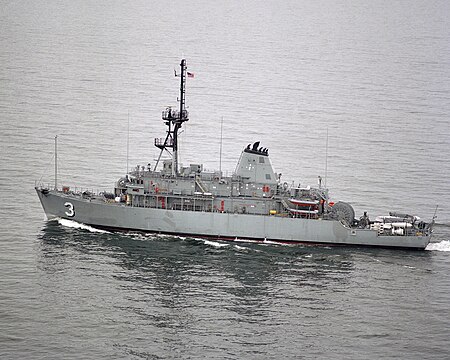Westend (Frankfurt am Main)
| |||||||||||||||||||||||||||||||||||||||||
Read other articles:

Tre donneAnna Magnani nell'episodio L'AutomobileTitolo originaleTre donne PaeseItalia Anno1971 Formatominiserie TV Generedrammatico Puntate3 Durata92 min (La sciantosa); 114 min (1943: Un incontro); 89 min (L'automobile) Lingua originaleitaliano CreditiRegiaAlfredo Giannetti SceneggiaturaAlfredo Giannetti Interpreti e personaggi Anna Magnani: Massimo Ranieri: Rosita Pisano: Nico Pepe: Enrico Maria Salerno: Vittorio Caprioli: Christian Hay: Doppiatori e personaggi Isa Di Marzio: Rosita Pisano Ser…

Movement in political theology Part of a series onAnarchism History Outline Schools of thought Feminist Green Primitivist Social ecology Total liberation Individualist Egoist Free-market Naturist Philosophical Mutualism Postcolonial African Black Queer Religious Christian Jewish Social Collectivist Parecon Communist Magonism Without adjectives Methodology Agorism Illegalism Insurrectionary Communization Expropriative Pacifist Platformism Especifismo Relationship Syndicalist Synthesis Theory Prac…

1959 studio album by Slim WhitmanI'll Walk with GodStudio album by Slim WhitmanReleased1959GenreSacred[1]LabelImperialSlim Whitman chronology Slim Whitman Sings(1959) I'll Walk with God(1959) Slim Whitman Sings Million Record Hits(1960) Singles from I'll Walk with God I'll Walk with God Professional ratingsReview scoresSourceRatingAllMusic[2]Billboard[1]The Encyclopedia of Popular Music[3] I'll Walk with God is a studio album by Slim Whitman, released …

Artikel ini perlu diwikifikasi agar memenuhi standar kualitas Wikipedia. Anda dapat memberikan bantuan berupa penambahan pranala dalam, atau dengan merapikan tata letak dari artikel ini. Untuk keterangan lebih lanjut, klik [tampil] di bagian kanan. Mengganti markah HTML dengan markah wiki bila dimungkinkan. Tambahkan pranala wiki. Bila dirasa perlu, buatlah pautan ke artikel wiki lainnya dengan cara menambahkan [[ dan ]] pada kata yang bersangkutan (lihat WP:LINK untuk keterangan lebih lanjut). …

Untuk orang lain dengan nama sama, lihat William Morton. William Thomas Green Morton (9 Agustus 1819 – 15 Juli 1868) bertanggung jawab atas pertunjukan umum pertama yang berhasil untuk eter sebagai anestesi penghirupan. Banyak orang yang menganggapnya penemu dan pengungkap anestesi. Namun, ia bukan orang pertama yang menggunakan eter untuk anestesi pembedahan - Crawford Williamson Long menggunakan eter beberapa tahun sebelumnya namun tak menerbitkan atau memopulerkan pemakaiannya…

International Women's Open 2003 Sport Tennis Data 16 giugno – 21 giugno Edizione 29a Superficie Erba Campioni Singolare Chanda Rubin Doppio Lindsay Davenport / Lisa Raymond 2002 2004 L'International Women's Open 2003 è stato un torneo di tennis giocato sull'erba. È stata la 29ª edizione del torneo di Eastbourne, che fa parte della categoria Tier II nell'ambito del WTA Tour 2003. Si è giocato a Eastbourne in Inghilterra, dal 16 al 21 giugno 2003. Indice 1 Campionesse 1.1 Singolare 1.2 Doppi…

Disambiguazione – Se stai cercando il videogioco, vedi Prince of Persia: Le sabbie del tempo. Prince of Persia - Le sabbie del tempoJake Gyllenhaal in una scena del filmTitolo originalePrince of Persia: The Sands of Time Lingua originaleinglese Paese di produzioneStati Uniti d'America Anno2010 Durata116 min Rapporto1,43 : 1 (IMAX)2,35 : 1 (Super 35) Genereazione, fantastico, avventura, epico RegiaMike Newell SoggettoJordan Mechner (storia e videogioco) SceneggiaturaCarlo …

李光耀逝世及葬礼李光耀(1923年-2015年)日期2015年3月23日-2015年3月29日地点新加坡斯里淡马锡(私人守灵)新加坡国会大厦(民众瞻仰)新加坡国立大学文化中心(国葬)万礼火葬场(英语:Mandai Crematorium and Columbarium)(火葬)网站www.rememberingleekuanyew.sg 2015年3月23日凌晨3時18分(新加坡標準時間),新加坡建国后首任总理、前內閣资政和执政人民行动党首任秘书长李光耀因…

بحرية الولايات المتحدة الدولة الولايات المتحدة الإنشاء 13 أكتوبر 1775 النوع قوات بحرية الحجم قائمة 430,400 بحري وضابط 289 سفينة 3,700 طائرة 17 سفينة برمائية 22 طراداً 60 مدمرة 27 فرقاطة 71 غواصة سفينتا قتال سواحل جزء من القوات المسلحة الأمريكية المقر الرئيسي فيرجينيا مناطق العمليا�…

Salafi jihadist militant Islamist group See also: Names of the Islamic State This article is about the modern violent extremist group. For the concept of a state based on Islamic law, see Islamic state. For other uses, see Islamic state (disambiguation). Several terms redirect here. For other uses, see ISIL (disambiguation), Isis (disambiguation), Daesh (disambiguation), and Daish (surname). Islamic Stateالدولة الإسلاميةad-Dawlah al-IslāmiyahFlag[1]Als…

Blu Basket 1971Pallacanestro Segni distintiviUniformi di gara Casa Trasferta Colori sociali Bianco e blu Dati societariCittàTreviglio Nazione Italia ConfederazioneFIBA Europe FederazioneFIP CampionatoSerie A2 Fondazione1971 DenominazioneOr.Sa. Treviglio(1971-1986)Bergamasca Country Basket Treviglio(1986-1999)Treviglio Basket(1999-2006)Blu Basket 1971(dal 2006) Presidente Stefano Mascio Allenatore Giorgio Valli ImpiantoPalaFacchetti(2 880 posti) Sito webwww.blubasket.it La Blu Basket 1…

هذه المقالة عن الشهرستاني صاحب كتاب الملل والنحل. لمعانٍ أخرى، طالع الشهرستاني (توضيح). أبو الفتح الشهرستاني معلومات شخصية اسم الولادة عبد الكريم بن أبي بكر أحمد الشهرستاني الميلاد سنة 1086 شهرستان الوفاة سنة 1153 (66–67 سنة)[1] شهرستان الإقامة نيسابوربغ�…

Women in LebanonA group of women in Zefta, Lebanon (1960)General StatisticsMaternal mortality (per 100,000)25 (2010)Women in parliament6.25% (2022)Women over 25 with secondary education53.0% (2010)Women in labour force22.6% (2011)Gender Inequality Index[1]Value0.432 (2021)Rank108th out of 191 Global Gender Gap Index[2]Value0.644 (2022)Rank119th out of 146 Part of a series onWomen in society Society Women's history (legal rights) Woman Animal advocacy Business Female ent…

Symbol associated with communist ideology For other uses, see Red star (disambiguation). A red five-pointed star A New Year tree with a red star in front of a church cupola in Volokolamsk, Russia, 2010. A red star, five-pointed and filled, is a symbol that has often historically been associated with communist ideology, particularly in combination with the hammer and sickle, but is also used as a purely socialist symbol in the 21st century. It has been widely used in flags, state emblems, monumen…

Moritz SchlickSchlick pada tahun 1930LahirFriedrich Albert Moritz Schlick14 April 1882Berlin, Kekaisaran JermanMeninggal22 Juni 1936(1936-06-22) (umur 54)Vienna, AustriaPendidikanUniversitas HeidelbergUniversitas LausanneUniversitas Berlin (PhD, 1904)Universitas Rostock (Dr. phil. hab., 1910)EraFilsafat abad ke-20KawasanWestern philosophyAliranFilsafat analitikLingkaran WinaPositivisme logisDasarisme[1]Tesis Tentang pantulan cahaya di lapisan yang tidak homogen (Tentang Pantulan Cah…

American legislative district Florida's 7th StateHouse of RepresentativesdistrictRepresentative Jason ShoafR–Port St. Joe Demographics74.7% White21.1% Black4.7% Hispanic0.4% Asian0.6% Native American0.1% Hawaiian/Pacific Islander1.4% OtherPopulation (2010) • Voting age156,188102,931Florida's 7th House district elects one member of the Florida House of Representatives. The district is represented by Jason Shoaf. The district is locat…

American soccer player Some of this article's listed sources may not be reliable. Please help improve this article by looking for better, more reliable sources. Unreliable citations may be challenged and removed. (December 2022) (Learn how and when to remove this message) Russ KlaboughPersonal informationFull name Russell KlaboughDate of birth (1990-05-11) May 11, 1990 (age 34)Place of birth Sierra Vista, Arizona, United StatesHeight 1.96 m (6 ft 5 in)Position(s) GoalkeeperTe…

Type of thermodynamic potential ThermodynamicsThe classical Carnot heat engine Branches Classical Statistical Chemical Quantum thermodynamics Equilibrium / Non-equilibrium Laws Zeroth First Second Third Systems Closed system Open system Isolated system State Equation of state Ideal gas Real gas State of matter Phase (matter) Equilibrium Control volume Instruments Processes Isobaric Isochoric Isothermal Adiabatic Isentropic Isenthalpic Quasistatic Polytropic Free expansion Reversibility …

Для термина «гладиатор» см. также другие значения. Ж.-Л. Жером. «Pollice verso» (1872) Художник Андрес Парладе (1884). Гладиатор, одержавший победу, возносит молитву перед алтарём Геракла. Гладиа́тор (лат. gladiator — «мечник», от gladius — «меч», «гладиус») — боец в Древнем Риме, кото…

French footballer Odsonne Édouard Édouard warming up for Toulouse in 2016Personal informationFull name Odsonne Édouard[1]Date of birth (1998-01-16) 16 January 1998 (age 26)[2]Place of birth Kourou, French Guiana, FranceHeight 1.87 m (6 ft 2 in)[2]Position(s) StrikerTeam informationCurrent team Crystal PalaceNumber 22Youth career2004–2011 AF Bobigny2011–2015 Paris Saint-GermainSenior career*Years Team Apps (Gls)2015–2016 Paris Saint-Germain B 1…









